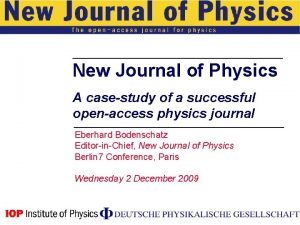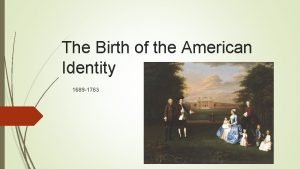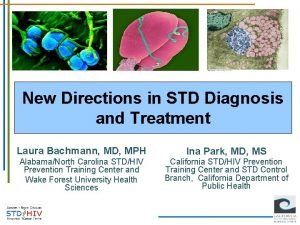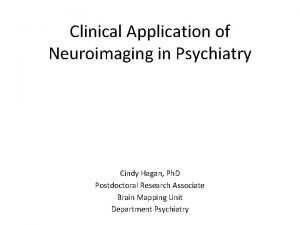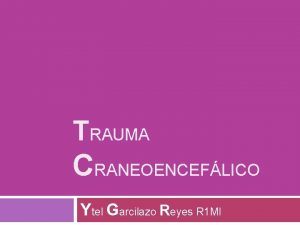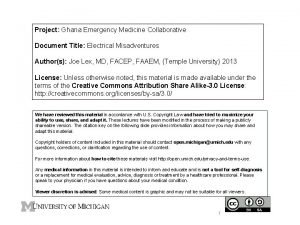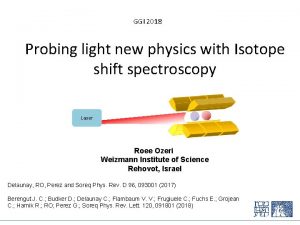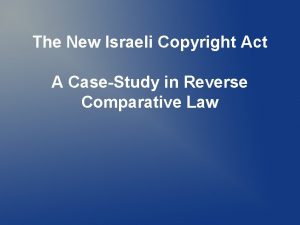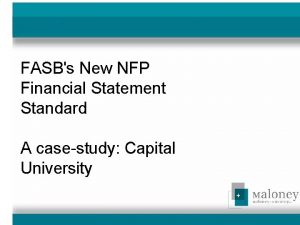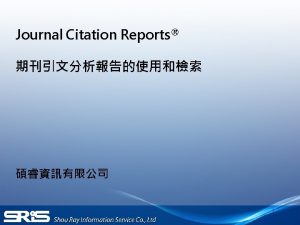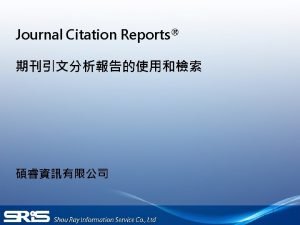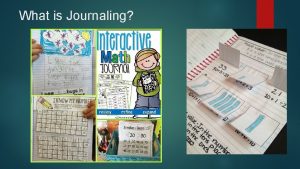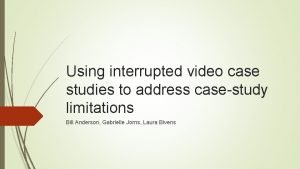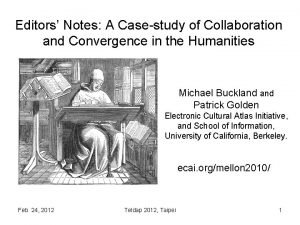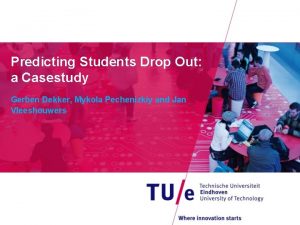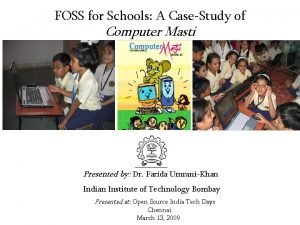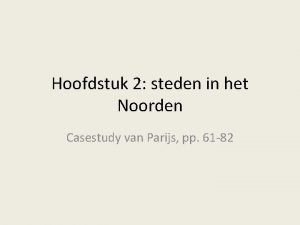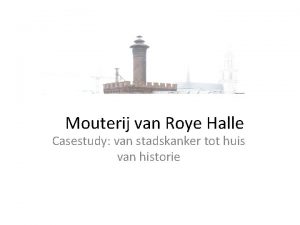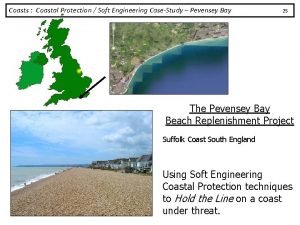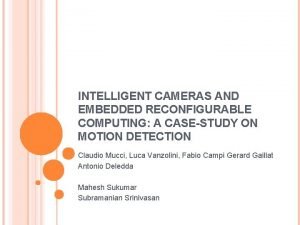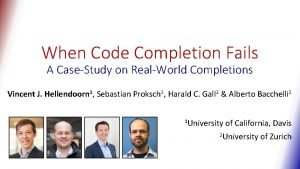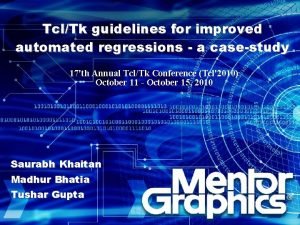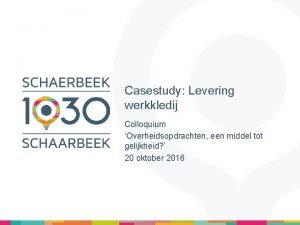New Journal of Physics A casestudy of a




















- Slides: 20

New Journal of Physics A case-study of a successful open-access physics journal Eberhard Bodenschatz Editor-in-Chief, New Journal of Physics Berlin 7 Conference, Paris Wednesday 2 December 2009

An early history l Launched in 1998 as a joint venture by the UK Institute of Physics (IOP) and Deutsche Physikalische Gesellschaft (DPG) l A response to the journals subscription pricing crisis l The first peer-reviewed, open-access journal to cover the whole of physics l In 1998 the term “open access” did not even exist l A then novel new publishing model that shifted the burden of cost from the reader to the author (or research provider)

Core original objectives l To publish research articles of highest quality at the cutting edge of physics l Involve the scientist in the financial aspects of the publication decision l To remove financial barriers for all readers worldwide l To offer authors with high article visibility and fast publication l To provide the widest possible dissemination of peer -reviewed physics research l To demonstrate financial self-sustainability under an open-access publishing model

Characteristics of NJP l All content permanently free to read l Subject coverage across the whole of physics l Strict peer-review process and editorial criteria l l > 75% of submissions are rejected Electronic-only l l l Free use of colour and multimedia No article length restrictions Novel features not possible in print. l Author-friendly copyright l The published version of articles can be freely distributed l Funded solely by article (not page) charges (£ 650)

Subject scope “The coverage of NJP extends across the whole of physics, encompassing pure, applied, theoretical and experimental research, as well as interdisciplinary topics where physics forms the central theme. The journal's objective is to publish truly outstanding research articles that merit the attention of all physicists. ”

Editorial requirements “An NJP article must meet the highest scientific quality standards, both in terms of originality and significance, and the research results should make substantial advances within a particular subfield of physics. The impact of an NJP article should be such that it will appeal to the journal's broad readership. Towards ensuring high editorial standards, every article submission is assessed by the Editorial Board in addition to independent referees. ”

Article style “…article abstracts, introductions and conclusions should be accessible to the nonspecialist, stressing any wider implications of the work within physics. However, the main body should not compromise on the scientific rigour and detail demanded by an international physics research journal. The broad readership that NJP attracts gives authors an opportunity to convey to a wider audience, as well as to specialists, the importance of the work. Authors are encouraged to take full advantage of the electronic medium to include colour, video, audio or other innovative presentation formats and links to more extensive tutorial information or data. ”

The initial challenge l A new, unproven journal l No track record or Impact Factor l Broad coverage aimed at serving the whole of physics l No critical mass in any one topic l Electronic-only l Concerns in 1998 about archiving digital content l Strict editorial standards l Particular demands for impact and general interest l Authors expected to pay a publication fee (£ 300 in 1998)

The initial challenge l First 3 years of NJP were tough l Just 79 articles published by 2002 l Article submissions were flat l 70% of submissions rejected l Fee waived for 60% of publications l IOP and DPG increased their investment in 2001 l Greater commissioning activity by journal team and Editorial Board l Continued faith in strict quality criteria l The result was. …….

Journal content - submissions

Journal content – published articles l Journal has grown by a factor of 35 since 2001 l Rejection rate is actually increasing (>75% for regular submissions) l 90% of articles are now paid for l More and more researchers and institutions are choosing to pay to publish with NJP

Journal content – subject coverage l Expanding coverage in all major disciplines l NJP publishes ~0. 2% of all physics papers l Particular target is the high energy particle physics community

Journal content - geography l Strong traditional support from Europe l Expanding support from N America and Japan l NJP has become a truly international journal

Journal readership

Journal readership - geography l More than 3 million downloads since 1998 l 700 downloads per article within 12 months l Readership each month extends to over 180 countries l Truly global l A real success for open-access!

Impact Factor l Current Impact Factor is 3. 44 l 3 rd highest out of general physics, original research journals l Articles are increasingly being cited l NJP named a ‘Rising Star’ by Thomson ISI

NJP author-friendly copyright l NJP authors (and their institutions) can distribute the published version in the following ways: l on personal and/or employer’s websites/repositories and free public servers. l share print or electronic copies of their article. l use all or part of their article and abstract in other scholarly publications of their own work. l Third parties have the same rights to reuse articles in NJP as described in the Creative Commons Attribution-Non-Commercial. Share. Alike 2. 5 license.

NJP Associate Members l NJP and is publishing model is endorsed by the following national physical societies: l l l l l Australian Institute of Physics Austrian Physical Society Belgian Physical Society Chinese Physical Society European Physical Society Finnish Physical Society French Physical Society Indian Physics Association Israel Physical Society Italian Physical Society Mexican Physical Society Netherlands Physical Society Norwegian Physical Society of Japan Polish Physical Society South African Institute of Physics Spanish Royal Society of Physics Swedish Physical Society Swiss Physical Society United Physical Society of the Russian Federation

Is NJP self-sustainable? l Since 2002 the article charge has increased in from £ 300 to £ 650 l Financial revenue relies on 3 factors: l The publication fee £ 650 (2008) l Number of published papers – 682 (2008) l % of authors paying – 90% (2008) l NJP covers all of its operating costs and more.

• NJP article charge £ 650 works including funds for innovation. • open access advantage. • as with any new journal it takes investment to get started.
 New journal of physics
New journal of physics The new york weekly journal
The new york weekly journal New england journal of medicine
New england journal of medicine The new york weekly journal
The new york weekly journal The new england journal of medicine
The new england journal of medicine Ytel garcilazo
Ytel garcilazo New england journal of medicine
New england journal of medicine Electrical injury
Electrical injury Modern physics vs classical physics
Modern physics vs classical physics University physics with modern physics fifteenth edition
University physics with modern physics fifteenth edition Physics ia example
Physics ia example Ggi new physics from the sky
Ggi new physics from the sky Lhc tantalizing new physics
Lhc tantalizing new physics Rules for speech punctuation
Rules for speech punctuation New york, new jersey, pennsylvania, and delaware
New york, new jersey, pennsylvania, and delaware Fresh oil new wine
Fresh oil new wine Marquis theatre
Marquis theatre Both new hampshire and new york desire more territory
Both new hampshire and new york desire more territory New-old approach to creating new ventures
New-old approach to creating new ventures Marketing kotler keller
Marketing kotler keller Njbta
Njbta
